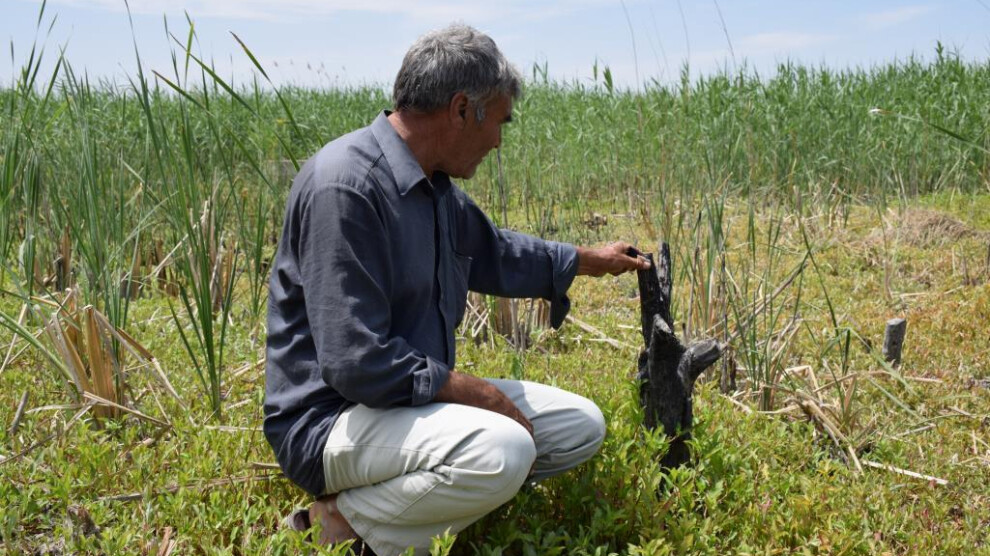Old villages west of Kobanê return to the surface as water level lowers
The lowering of the water level of the Euphrates River caused old villages west of Kobanê that have been under water for 22 years to return to the surface.
The lowering of the water level of the Euphrates River caused old villages west of Kobanê that have been under water for 22 years to return to the surface.

The invading Turkish state wants to destroy the people of Northern and Eastern Syria and uses many dirty methods to achieve this. Finally, it lowered the water level of the Euphrates River and used water as a tool of war.
After the water level was reduced, many villages on the east bank of the Euphrates River and a village in the west of Kobanê emerged from under the water where they had remained for more than 22 years.
When the Damascus government established the Tişrîn Dam in 1999, parts of the villages of Boraz, Qomlex, Til El Ibir, Til Ehmerm Dîşe and El Cedayê were flooded. The decrease in water in 2017 caused some of these villages to emerge. In particular, the village of Borazê, whose 700-decare area was under water, began to come to the surface again.
A citizen named Mistefa Îbrahîm, a resident of Borazê, is one of those whose house came to the surface with the retreat of the water. This incident reminded Mistefa Îbrahîm of his childhood. He shared with ANHA his memories of fleeing with his family and relatives when the dam was built. When the dam was built, many village residents sold their property and settled in cities such as Manbij and Kobanê. But Mistefa Îbrahîm’s family did not move from tits lands.
Mistefa Îbrahîm referred to those memories and said: “The thing that hurt me most was seeing the people leaving their land and home.”
The occupying Turkish state's establishment of many dams on the Euphrates River and the closing of the dam gates caused the water level to drop as of January 27 this year. According to the agreement, Syria's share of water in the Euphrates River should be 500 m3 per second, but the Turkish state leaves only 200 m3 of water per second.